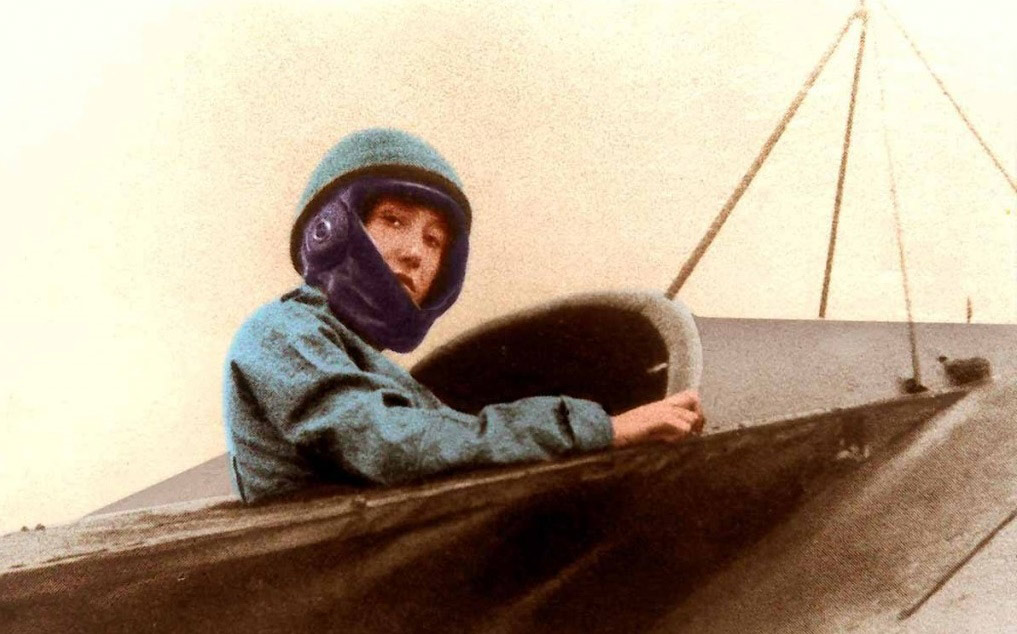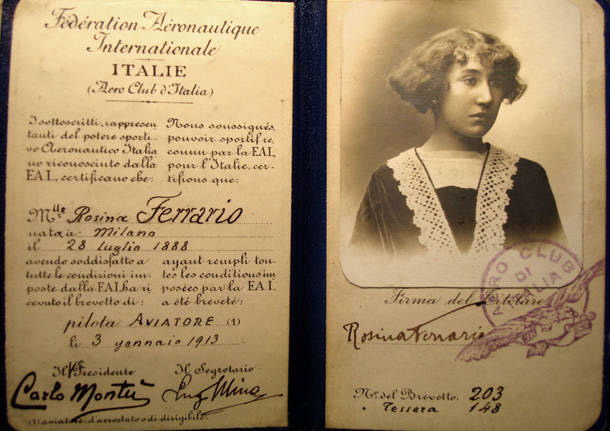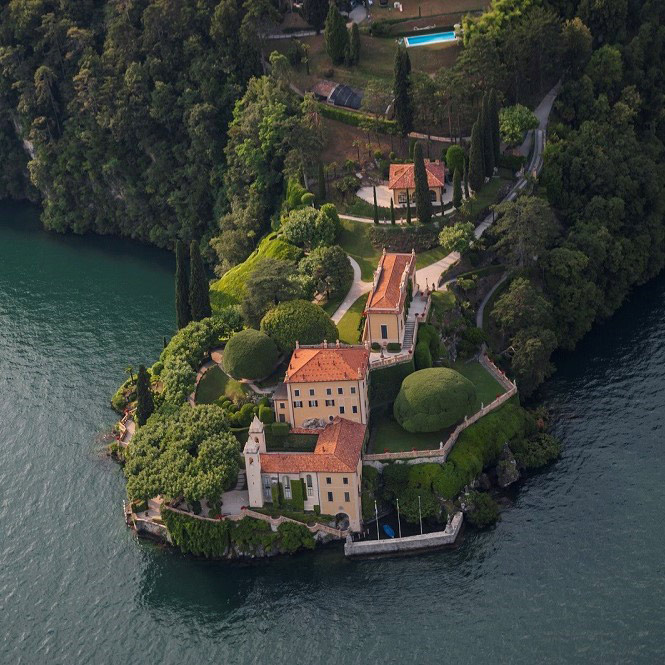In the Big Blue with Rosina Ferrario

Back in the day, the French term is most common in aviation circles: “le grand bleu”, that endless, “big blue” expanse unlike any earth-bound continent, reaching all the way up to the stars. It is the early 1900s, and airplanes are starting to appear in the sky.

It is the early 1900s, and airplanes are starting to appear in the sky. The dream of flight could be within reach after all – if, of course, you are a man, as the legend of Icarus taught us. But the 20th century, in many ways the century of women, manages to give a few brave and beautiful female pioneers their wings. One of them is Rosina Ferrario, born in Milan on July 28, 1888 to a distinguished, adventurous, dare we say jet-setting family. One of her ancestors fought on the front lines of the Risorgimento, fled to England and became the personal chef to the Prince of Wales. Rosina prides herself on being a modern woman: she speaks several languages, has a job at a Cadillac dealership and is at her happiest summiting a mountain or driving a car. It is while she is driving, one day in the autumn of 1909, that Rosina spots a biplane hovering in the sky, piloted by Léon Delagrange, a man of many charms – and many vocations, from sculptor to aviator. A eureka moment. Her biographer Rosellina Piano, author of Signorina aviatrice, the definitive book on Rosina Ferrario, quotes from her diary entry on that day: “I wanted to be up there as well, high in the sky, flying fast and free, enjoying the beauty of the boundless horizon from above.” Our future aviatrix has her first taste of flying less than two years later at the Piazza d’Armi flight school in Baggio, just outside Milan. And a few short months later, she is at the Vizzola Ticino airfield in 1912 to watch Enrico Cobioni break the world speed record in his Caproni 12. The same Cobioni who would eventually become Rosina’s instructor.


The first drills are frustratingly earthbound, taxiing and more taxiing, until Rosina finally lifts her plane a few feet off the ground, then ten, then thirty and in just six months she is soaring at 100 feet or more. Rosina is the quintessential modern woman in the photographs from that time, sporting a leather jacket, breaches and a leather helmet to tame her shock of short curly hair. On January 3, 1913, the big day finally arrives. The commissioners, all men, line up along the runway. Rosina takes to the sky in her Anzani-powered Caproni and flies two impressive figures of eight around a set of pylons five hundred meters apart, before setting off once again for the distance test. Flying 200 feet off the ground, she covers seven kilometers in less than fifteen minutes and sticks a picture-perfect landing. She cuts the engine, but her heart keeps pounding. It’s official; she has passed. Her license from the Fedération Aèronautique Internationale and the Aero Club d’Italia, number 203, certifies – in both Italian and French – that “Miss Rosina Ferrario, having met all of the conditions imposed by the FAI, has qualified for an aviator’s license.” Rosina Ferrario is Italy’s first female aviator and only the eighth in the world. A reporter wonders if it isn’t awfully lonely up there in the sky, as if loneliness is what women deserve when they set their sights too high. “I never feel like I’m alone when I’m in the air,” Rosina responds. “It is as if the sky itself becomes a living, life-giving thing with its own breath and its own erratic impulses and, sometimes, even its own pitfalls, reminding me that I have put my life in her hands, that the true joy of flight lies in her power, her mystery.”
By this time, Rosina is a national celebrity, and she accepts an invitation from the Naples Aeroclub to fly in the 1913 Air Show. Rosina is well aware that all eyes in the grandstand are on her, and she showers the crowd with red carnations from above. In the May 20, 1913 issue of La Donna, Bianca Maria Cammarano waxes lyrical: “The Naples Air Show is proof that the women of Italy are not content to simply accompany a man on his miraculous journey through the sky. We have, in fact, a distinguished and most interesting young woman who has earned a pilot’s license in her own right and is flying her airplane as steadfast as any man. Of all the flights of fancy women have ever had, this one – Rosina Ferrario’s grand flight – seemed the most unattainable.”
In October of the same year – the year in which this extraordinary woman and Grand Hotel Tremezzo cross paths – Rosina arrives in Como, the most prestigious leg of the great “Circuito dei Laghi” seaplane race. The list of participants reads like a Who’s Who of European aviation: Roland Garros, Helmuth Hirth, Léon Morane and the Italians Filippo Cevasco and Achille Landini. It was Landini, who, in an attempt to break the world height record, is forced into a water landing near Carate Lario when his engine fails. A passing speedboat agrees to tow the plane to Campo Garibaldi, a speedboat belonging to our very own Grand Hotel Tremezzo, which had opened just three years earlier. And Rosina? Barred from taking part in the race as a woman, Rosina decides instead to fly from Milan to Como, soaring past Tremezzina, Bellagio and Isola Comacina in only thirty-five minutes and breaking her own personal record in the process.
When war breaks out, Rosina Ferrario, very much a world-famous aviation ace, volunteers to fly medical transport missions for the Red Cross. It is a hard no from the Italian Air Force; after all, they contend, “The law makes no provision for the enlistment of young ladies in the Royal Army.” Contrast that with the French Air Force, which gladly accepts the application of accomplished aviatrix, mountaineer and journalist Marie Marvingt. Disillusioned, Rosina decides never to fly again. In 1921 she marries Enrico Grugnola, a man she met on a mountaineering excursion, and together they open Hotel Italia on what was then called Piazzale Fiume in Milan. Even in the clear skies of hospitality, we can be sure that Rosina soared to new heights with her own signature flair.



